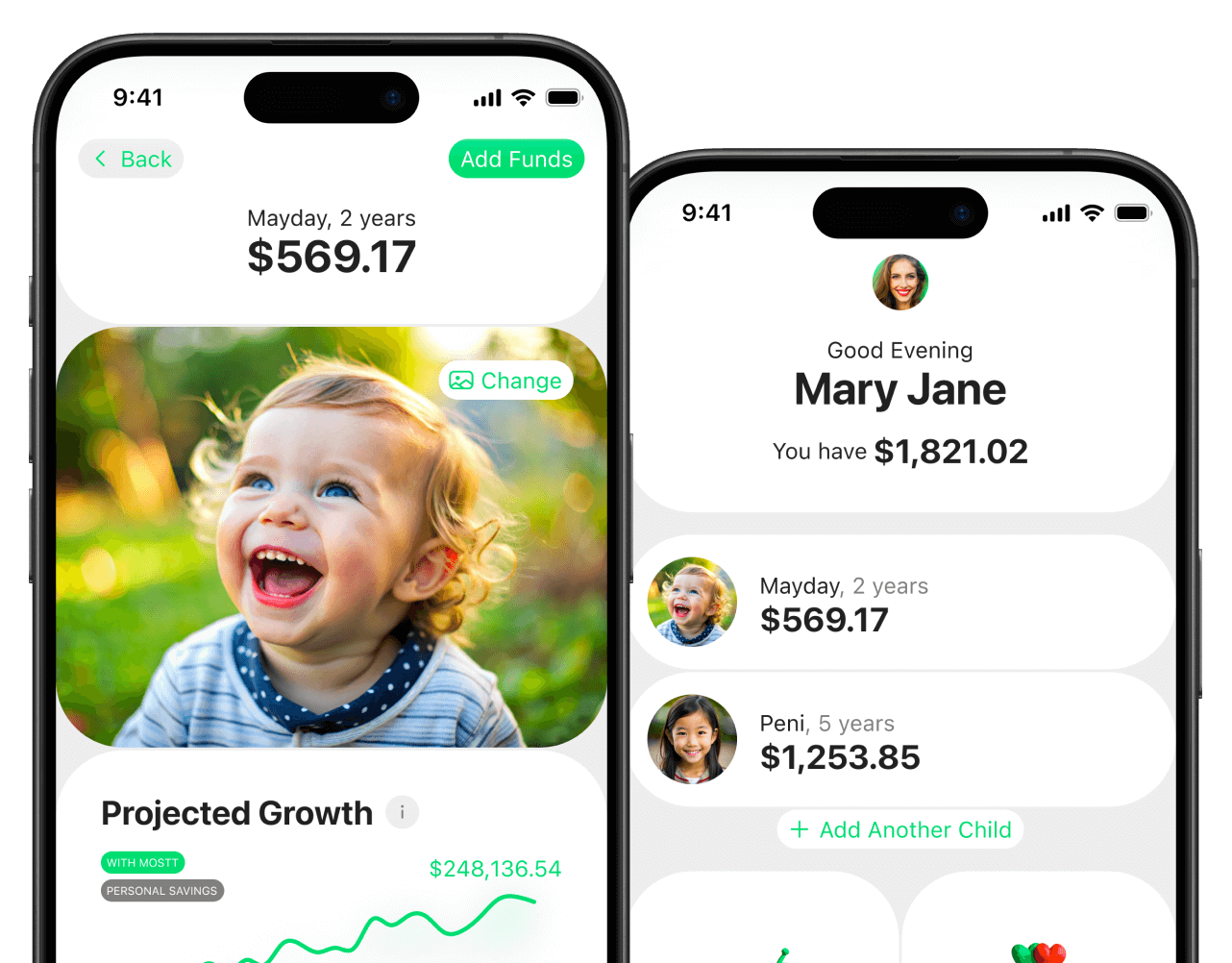Every birthday, it’s the same sweet scene. Your child is surrounded by balloons, wrapping paper flies through the air, and relatives hand over colorful cards with crisp bills tucked inside. Grandparents give a little something. An aunt or uncle adds to the stack. Maybe even a neighbor chips in.
You feel grateful for the generosity, and your child is thrilled. But by the end of the week, that birthday money is usually gone. It disappears into toy aisles, Roblox gift cards, fast food, or gadgets that light up and make noise — but only for a while.
And that’s where most stories end.
But what if this year, you changed the narrative? What if those birthday dollars could do more than entertain? What if they could build something — something that lasts well beyond childhood?
With a simple shift in mindset, those once-a-year cash gifts could become the foundation of something powerful: long-term wealth for your child.
The Birthday Money Trap Most Families Fall Into
If you’re like most parents, you’ve probably tried to balance letting your kids enjoy their birthday gifts with teaching them some version of financial responsibility. Maybe you encouraged them to save a portion of what they received. Maybe you let them spend it, but only on something “worthwhile.”
Still, more often than not, birthday money gets lumped into what most kids see as “fun money” — which, in kid terms, means it’s gone within days.
It’s not that they’re doing anything wrong. In fact, they’re doing exactly what we all learned growing up: money comes in, you spend it, and you wait for more to come later.
But if we never help our children see money differently, they’re likely to grow up repeating that exact cycle. Birthday cash turns into short-term satisfaction. Short-term satisfaction turns into spending habits. And spending habits turn into adult financial stress.
The key is to break that pattern early by introducing a new habit: investing.
Teach Your Kid to Be an Investor — Even at Age 5
Imagine this: your five-year-old gets $50 for their birthday. Instead of rushing to spend it all, you show them how to buy a small piece of a company they already know and love — like Disney, Apple, or Roblox.
Suddenly, they’re not just spending money — they’re owning something. And ownership sparks curiosity, confidence, and critical thinking. It opens up the door to financial conversations most people don’t have until adulthood.
The earlier kids learn that money can grow when it’s invested, the more likely they are to carry that belief — and behavior — into adulthood.
This doesn’t mean they can’t spend any birthday money. It just means that some of it should be redirected toward a goal with lasting impact.
How a Small Birthday Gift Can Grow Over Time
Let’s say your child receives $150 in birthday money each year. That may not sound like much — but if you invest that $150 annually into a low-cost index fund with an average return of 8%, you’d have over $5,100 by the time your child turns 18.
Leave that amount invested until your child is 30 — and it could grow to more than $11,000 without adding another penny.
That’s the magic of compound interest — what Albert Einstein famously called the eighth wonder of the world. The earlier you start, the more powerful it becomes.
And if your child adds just a little bit more each year, their potential long-term gains grow exponentially.
“But My Kid Just Wants to Spend the Money…”
Of course they do. They’re kids.
This isn’t about eliminating the joy of birthday spending — it’s about creating balance. A simple way to introduce this is through the 50/50 rule: let your child spend half of what they receive and invest the other half.
That $100 gift from Grandma? Let them pick out something fun with $50, and then guide them through investing the rest. It becomes a hands-on learning experience, not a lecture.
Show them the account, explain what it means to be an investor, and involve them in the process. Use tools like fractional shares so they can buy just $25 worth of a company — even if a full share costs much more.
When kids feel involved, they’re more engaged — and they’re far more likely to see investing as a rewarding, empowering habit rather than a boring adult chore.
Celebrate Their Progress to Reinforce the Habit
Once you’ve made that first investment, don’t let the account become invisible. Make it a part of your family routine.
Use a kid-friendly investment platform that lets you both log in and track progress visually. Check in every quarter to review how much the account has grown, and celebrate milestones together. When the account hits $500, cheer. When it grows by $10, make a note of it.
These little celebrations reinforce the behavior and help kids build a positive emotional connection with saving and investing.
Studies show that positive reinforcement is one of the most effective tools in shaping long-term habits. So don’t underestimate how powerful a little encouragement can be.
How to Get Started Today
You don’t need to be a financial expert to turn birthday money into long-term wealth. You just need a few tools and a clear plan.
Open a custodial investment account.
This is an account that you manage on behalf of your child until they reach adulthood (usually 18 or 21, depending on your state). Reputable platforms like Fidelity, Charles Schwab, or Mostt offer user-friendly options designed specifically for families.
Deposit birthday or holiday money.
Start with whatever your child receives — $25, $50, or more. Even small deposits compound over time. You can also automate future contributions or invite others to pitch in using a gifting link.
Choose simple, diversified investments.
A low-cost index fund or ETF is usually a great starting point. They offer broad market exposure with lower risk than individual stocks, and they grow steadily over time.
Review progress and talk about goals.
Make investing a part of your family’s language. Tie it to things your child cares about — college, a future apartment, a car, or starting their own business someday.
Why This Matters More Than Ever
According to a 2023 T. Rowe Price study, kids who learn about money management early are significantly more likely to feel confident about their finances as adults.
They’re also more likely to avoid credit card debt, build savings, and invest consistently.
Financial literacy isn’t just a nice-to-have skill. It’s one of the most important tools we can pass on to our children.
And the earlier they start? The better.
Give the Gift That Actually Grows
It’s easy to overlook birthday money. It comes in small bursts, and the temptation to let your child enjoy it now is strong. But small amounts, used wisely, can become something much bigger.
By investing even part of those birthday gifts, you’re showing your child that money isn’t just for spending — it’s for building. You’re helping them practice patience, intentionality, and long-term thinking. You’re giving them the tools to make smarter financial decisions as adults.
Most kids won’t remember the toy they got when they turned seven. But they’ll remember the moment they realized they were building something for their future. And they’ll remember that you helped them start.
So when the next birthday rolls around, don’t just let the money disappear into a toy bin. Help it become something more. Help it become a stepping stone toward lifelong wealth.
Because the best gifts don’t get thrown away.
They grow.




